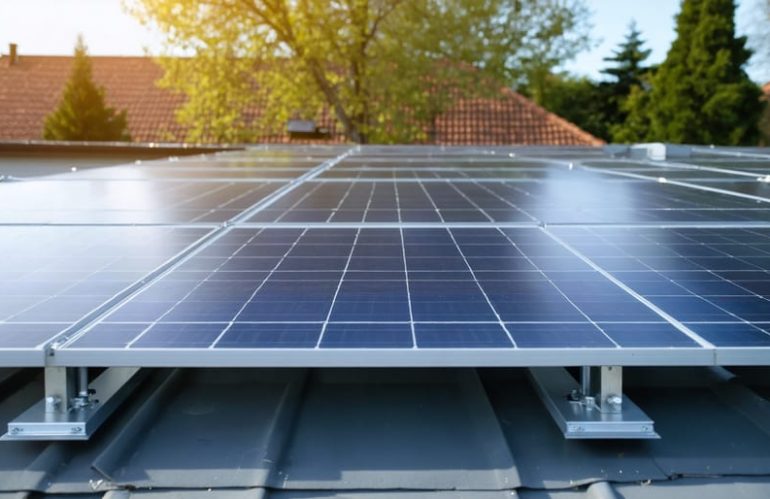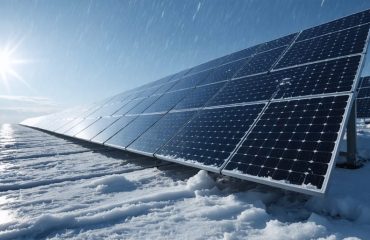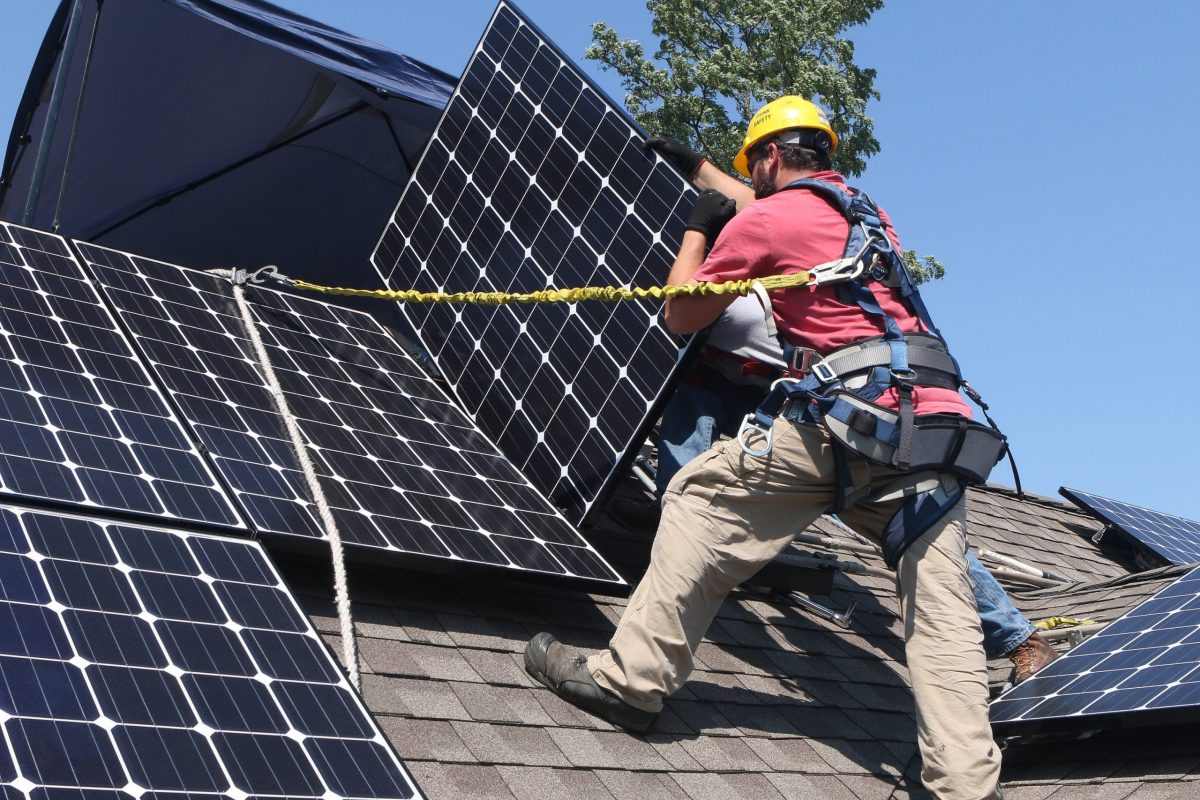Your solar panels face a hidden challenge that directly impacts your wallet: heat. While sunlight powers your system, excessive temperatures can reduce your panels’ efficiency by 10-25% and shorten their lifespan—potentially costing you thousands in lost energy production and earlier replacement needs.
Here’s the good news: thermal solar technology has evolved dramatically. Modern systems incorporate intelligent heat management that keeps your panels operating at peak performance for 25-30 years or longer. Understanding how temperature affects your investment isn’t just technical knowledge—it’s the key to maximizing your return and ensuring your sustainable energy choice pays off for decades.
The difference between a solar system that merely survives and one that thrives comes down to thermal management. When you know what questions to ask installers about heat dissipation, ventilation design, and panel placement, you protect both your investment and your energy savings. This knowledge transforms you from a passive buyer into an informed decision-maker who can spot quality installations and avoid costly mistakes that won’t show up until years down the road.
Why Your Solar Panels Get Hot (And Why It Matters)
Here’s a surprising fact that catches many homeowners off guard: solar panels actually work *less* efficiently when they get too hot. It seems counterintuitive, right? After all, aren’t solar panels supposed to love the sun?
Here’s what’s really happening on your roof. When sunlight hits your solar panels, they convert some of that energy into electricity—that’s the power running your home. But they can’t convert all of it. The remaining energy becomes heat, warming up the panels themselves. On a sunny summer day, your panels can reach temperatures of 149°F or higher, even when the air temperature is a comfortable 77°F.
Now for the myth-busting part: hotter doesn’t mean better. Many people assume solar panels perform best in scorching climates like Arizona or Nevada. The truth is, panels generate the most electricity in cool, sunny conditions. For every degree above their ideal operating temperature (typically around 77°F), most panels lose about 0.5% of their efficiency. Over the course of a hot summer, that adds up.
This is where thermal management comes into play—and why it matters for your wallet. When panels run cooler, they produce more electricity, which means greater savings on your energy bills and a faster return on your solar investment. The good news? Modern solar installations include smart design features that help panels stay cooler, from proper spacing that allows airflow underneath to light-colored mounting systems that reflect excess heat. Understanding this helps you make informed decisions about your system’s setup and long-term performance.

The Hidden Cost of Overheating Panels
Performance Drop You Can See on Your Energy Bill
Here’s a reality check: when temperatures soar above 77°F, your solar panels start producing less electricity than they should. For every degree higher, most panels lose about 0.5% of their power output. On a scorching 95°F summer day, that’s roughly a 9% drop in production—energy you’re not generating and savings you’re not seeing.
Let’s put real numbers to this. If your system normally produces 30 kilowatt-hours on a mild spring day, that same system might only deliver 27 kWh during peak summer heat. Over a full summer, those lost kilowatt-hours add up to dozens of dollars in unrealized savings. This thermal efficiency loss over time isn’t a defect—it’s basic physics affecting every solar installation.
The good news? Understanding this pattern helps you set realistic expectations and recognize when your system needs attention. A well-designed installation accounts for these temperature effects, ensuring you still maximize your investment even on the hottest days.
The Long-Term Damage You Can’t See
While solar panels are built to last decades, heat takes a slow but steady toll on their internal components. Think of it like leaving your car in the sun every day—eventually, materials break down. Over time, temperature fluctuations cause solar cells to expand and contract repeatedly, creating microscopic cracks that reduce efficiency. The electrical connections between cells can weaken, and the protective layers may degrade faster than expected.
Here’s the good news: this degradation happens gradually, typically resulting in only 0.5-1% efficiency loss per year under normal conditions. Quality panels are engineered to handle these stresses, which is why manufacturers confidently offer 25-year warranties. The real damage accelerates when thermal management is poor—inadequate ventilation, improper installation angles, or low-quality materials compound these effects.
Understanding this natural aging process helps you make informed decisions. When comparing systems, ask installers about degradation rates and thermal design features. A slightly higher upfront investment in panels with better heat tolerance often means stronger performance and greater savings over your system’s lifetime. Your solar investment remains solid; you’re simply ensuring it stays that way.
Smart Design Features That Keep Panels Cool
Proper Spacing and Airflow
Think of your solar panels like a car engine—they need breathing room to stay cool and work efficiently. Professional installers create natural cooling pathways by carefully positioning panels with the right spacing and angles.
When panels are mounted, they’re typically raised several inches above your roof surface. This gap becomes a cooling channel where air flows freely underneath, whisking away heat before it builds up. It’s a simple principle that makes a significant difference in performance—cooler panels generate more electricity, putting more money back in your pocket.
The tilt angle of your panels does double duty: it captures maximum sunlight while encouraging air movement across both the front and back surfaces. Installers calculate the optimal angle based on your location, ensuring you get both great energy production and natural cooling benefits.
Between individual panels, small gaps allow cross-ventilation that prevents heat from getting trapped. These spacing decisions might seem minor, but they directly impact your system’s output and lifespan. A well-ventilated array can maintain better efficiency throughout hot summer days when you need that cooling power most. Your installer should explain their spacing strategy—it’s one of those behind-the-scenes details that protects your investment for decades to come.

Advanced Panel Materials and Coatings
Today’s solar panels aren’t your neighbor’s old rooftop setup from a decade ago. Modern panels come equipped with innovative materials designed to handle heat more effectively, which means better performance and longer life for your investment.
Think of these advanced coatings like a cooling system for your panels. Special reflective layers bounce away excess heat that doesn’t convert to electricity, keeping the panels at optimal temperatures. Some manufacturers use materials that naturally conduct heat away from the solar cells themselves, similar to how heat sinks work in your computer.
The real benefit? These panels maintain their efficiency even on scorching summer days when older models would slow down. You’ll see more consistent energy production throughout the day and across seasons, translating to better returns on your investment.
Here’s the myth-buster: many homeowners worry solar panels will overheat and fail quickly. The truth is that quality panels with modern thermal management materials actually last 25-30 years or more. When choosing panels, ask your installer about thermal coefficients and heat-dissipating technologies—just know that premium materials typically mean panels that keep performing efficiently year after year, maximizing your energy savings and reducing replacement costs down the road.
Strategic Placement on Your Roof
Where your panels sit matters more than you might think. Professional installers carefully evaluate your roof to find the sweet spot that maximizes energy production while keeping temperatures in check.
The ideal placement considers three key factors. First, they’ll map your roof’s sun exposure throughout the day and across seasons, aiming for maximum sunlight during peak hours. Second, they’ll identify shade patterns from trees, chimneys, or neighboring buildings—even small shadows can create hot spots that reduce efficiency. Third, they’ll ensure adequate airflow beneath and around your panels, allowing heat to dissipate naturally rather than building up.
South-facing roofs typically receive the most consistent sunlight, but don’t worry if that’s not your situation. Modern installation techniques can optimize east, west, or even north-facing sections. The spacing between panels also matters—proper gaps allow cooling breezes to circulate, preventing heat buildup that could shorten your system’s lifespan.
This thoughtful placement strategy protects your investment by keeping panels operating at their optimal temperature range, directly translating to better performance and lower energy bills for decades to come.
What This Means for Your Investment
Better thermal management translates directly into more money staying in your pocket. When your solar panels operate at cooler temperatures, you’re not just getting better performance today—you’re protecting the financial value of your investment for decades to come.
Let’s start with warranties. Manufacturers offering longer warranties typically design systems with superior thermal management because they know cooler panels last longer. A 25-year performance warranty is standard, but systems with advanced cooling features often come with 30-year guarantees. That’s five extra years of protected investment—a significant advantage when you’re financing a system that costs thousands of dollars.
The return on investment improves substantially too. While standard panels might lose 10-15% of their efficiency over 25 years due to heat-related degradation, well-managed systems often maintain 90-95% of their original output. That difference means you’re generating more electricity every single day, which adds up to thousands of dollars in energy savings over the solar panel lifespan.
Consider this practical example: A typical home solar system costs $15,000 after incentives. Poor thermal management could reduce your lifetime energy production by 10%, essentially erasing $1,500 of value. Conversely, systems designed for optimal heat dissipation often pay for themselves 1-2 years earlier than standard installations.
Replacement costs matter too. Panels that run hot are more likely to develop microcracks, connection failures, and other issues requiring repairs or early replacement. By keeping temperatures down, you avoid these unexpected expenses that can derail your savings plan.
The bottom line? Thermal management isn’t just a technical feature—it’s financial protection. Systems that stay cool deliver consistent performance, require fewer repairs, and maintain their value longer, ensuring your solar investment delivers the returns you expect year after year.

Questions to Ask Your Solar Installer About Thermal Management
When you’re ready to talk with solar installers, having a few friendly questions prepared helps ensure you’re getting a system designed to last. Think of these as conversation starters that show you’ve done your homework—installers appreciate informed homeowners.
Start by asking, “How does your design account for heat management on my specific roof?” Every home is different, and a quality installer will explain how they plan for adequate airflow beneath your panels. This simple question reveals whether they’re using a one-size-fits-all approach or customizing for your situation.
Follow up with, “What type of mounting system do you recommend and why?” The answer should include mentions of spacing and ventilation. If they focus only on aesthetics or price, probe a bit deeper about long-term performance considerations.
Don’t hesitate to ask, “What’s the expected operating temperature for panels on my roof?” A knowledgeable installer should provide estimates based on your climate and roof type. This shows they’ve calculated real-world conditions rather than ideal laboratory scenarios.
Another helpful question: “How will seasonal temperature changes affect my system’s output?” This opens the door to discuss performance expectations throughout the year, helping you understand that slightly lower summer output compared to spring is actually normal and expected.
Finally, ask about warranties: “Does your warranty cover performance degradation related to heat exposure?” Understanding what’s protected gives you peace of mind about your investment. Quality installers stand behind their thermal management designs with comprehensive coverage.
Remember, you’re not interrogating—you’re partnering with professionals to make smart decisions about your home’s energy future. Good installers welcome these questions because they demonstrate your commitment to a successful, long-lasting solar installation.
Understanding how heat affects your solar panels isn’t just technical knowledge—it’s the key to protecting your investment and maximizing your energy savings for decades to come. When you prioritize proper thermal management during installation, you’re setting yourself up for consistent performance and long-term financial returns that truly deliver on solar’s promise.
The good news? Today’s solar technology is more resilient than ever, and quality installers who understand these thermal principles can design systems that thrive in your specific climate. Don’t hesitate to ask potential installers about their approach to ventilation, panel spacing, and heat mitigation strategies. Their answers will tell you everything you need to know about whether they’re committed to your system’s longevity.
With the right setup and partners, your solar panels can reliably generate clean energy and savings for 25 years or more—making sustainable living both environmentally responsible and financially smart.









